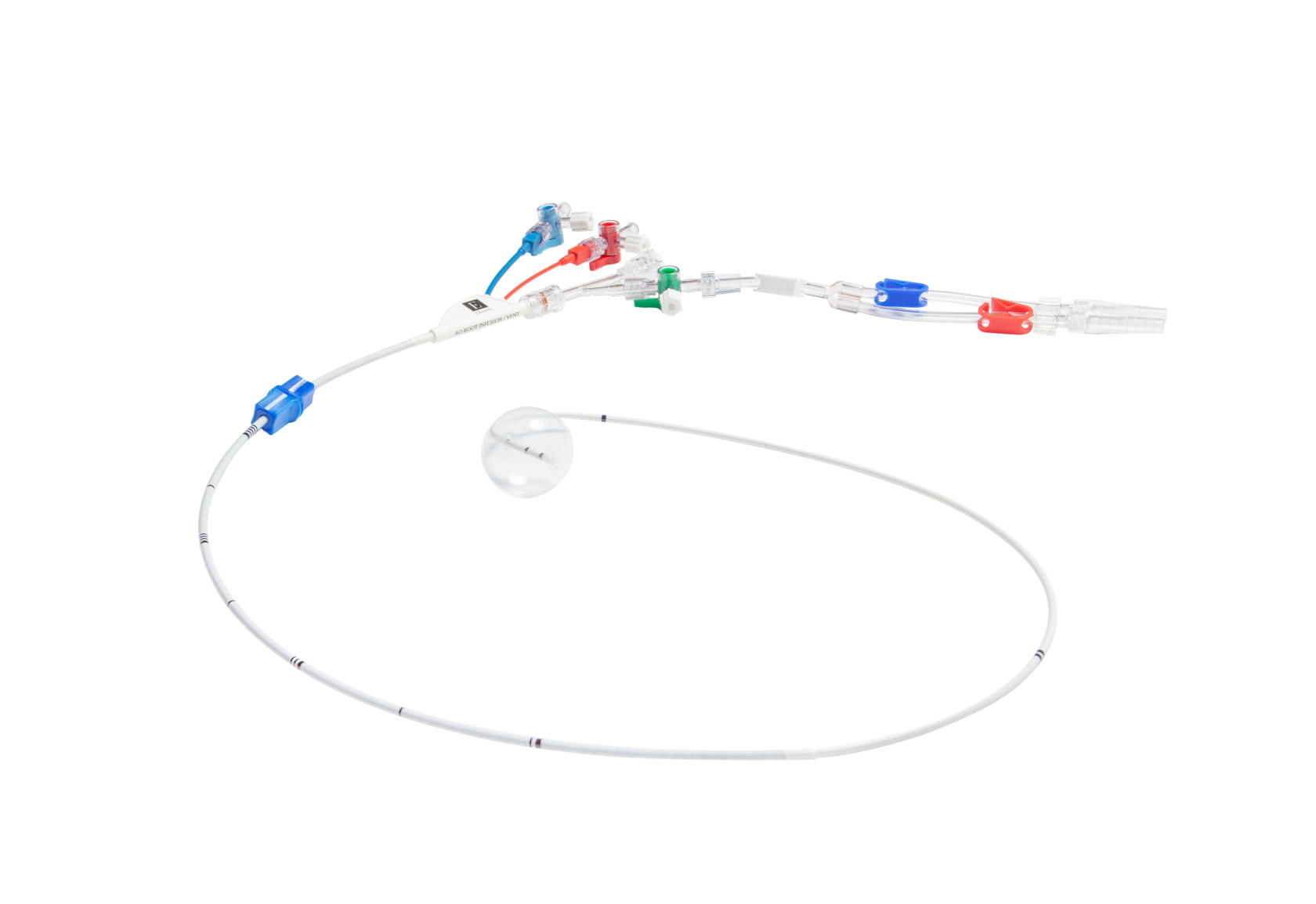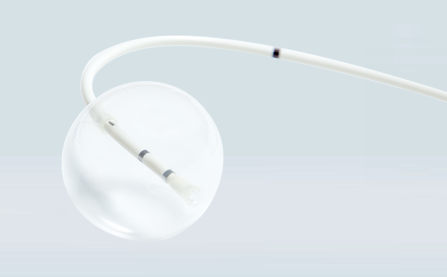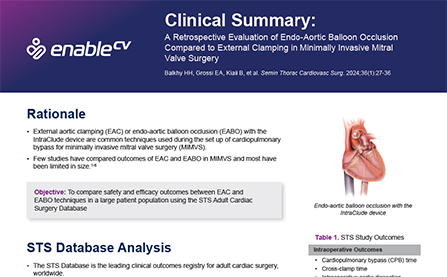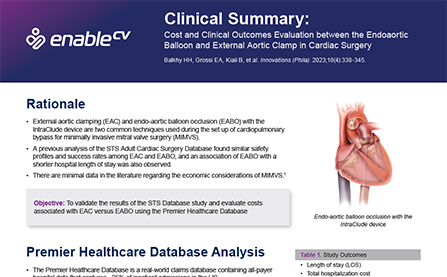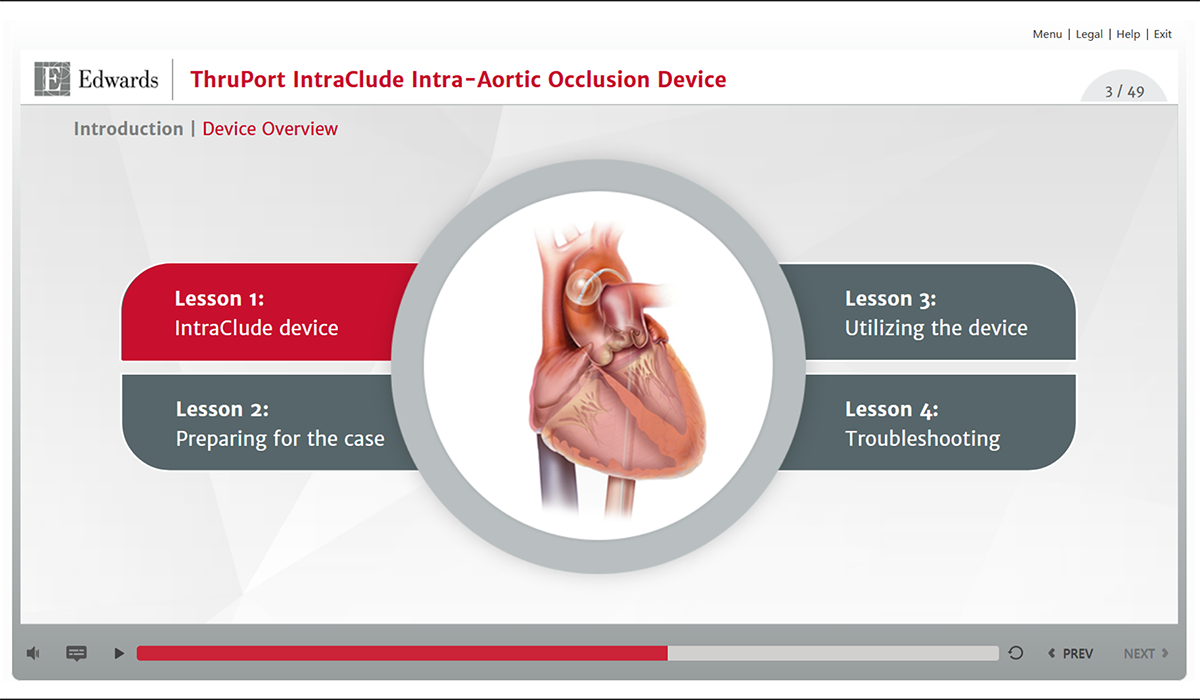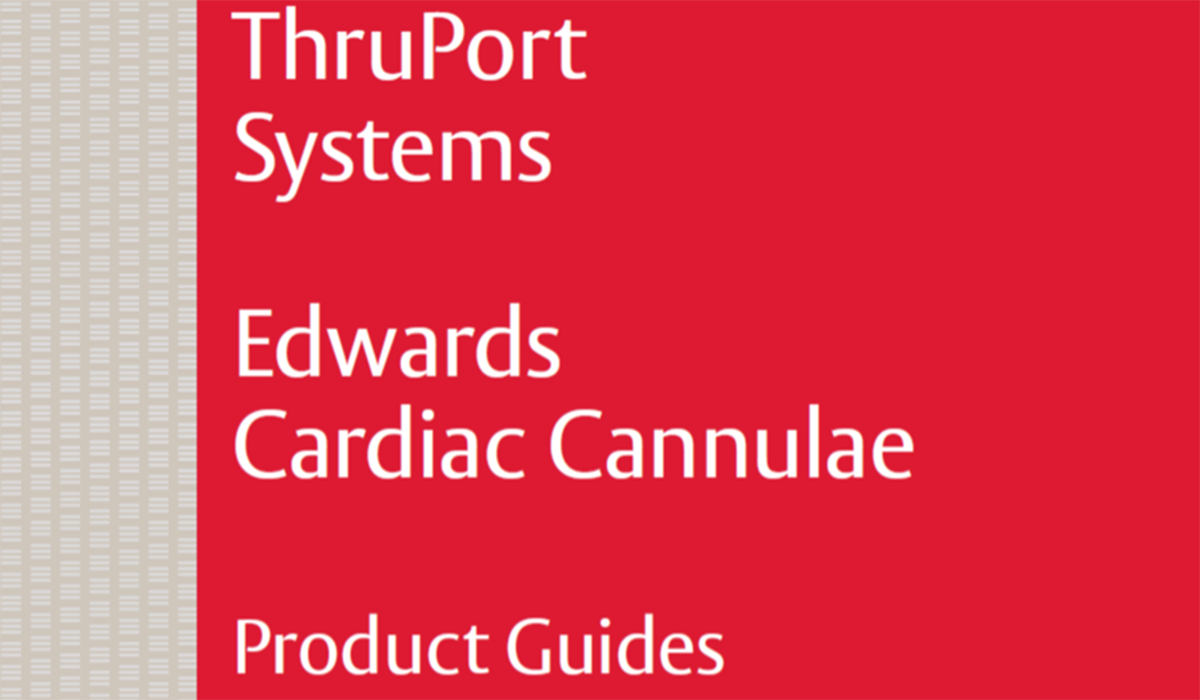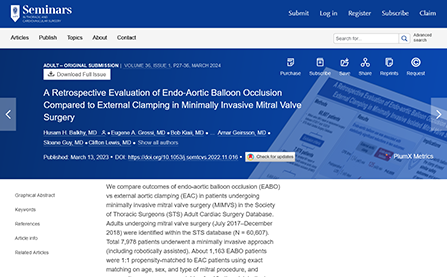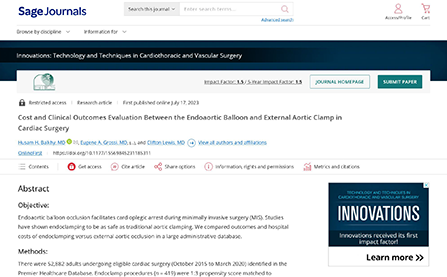IntraClude intra-aortic occlusion device
The IntraClude device from Edwards Lifesciences is an integrated system to occlude, arrest, and vent the heart as well as monitor aortic root pressure.
Click below to learn more about the device and real-world evidence supporting its use.
IntraClude Device
The IntraClude intra-aortic occlusion device (Model ICF100) is indicated for use in patients undergoing cardiopulmonary bypass. The IntraClude device occludes and vents the ascending aorta when the balloon is inflated, and the device’s central lumen allows delivery of cardioplegia to arrest the heart. The pressure lumen allows monitoring of the aortic root pressure.
Device Specifications
- 10.5 Fr (3.5 mm), triple-lumen, 100 cm long catheter
- Designed to occlude the ascending aorta in order to partition the aortic root from arterial circulation
- Balloon expands to occlude a range of aorta sizes from 20 to 40 mm
- Designed to be used in the femoral approach with:
- 21 Fr Edwards EndoReturn arterial cannula (ER21B)
- 23 Fr Edwards EndoReturn arterial cannula (ER23B)
- 19 Fr Edwards introducer sheath (IS19A)
- The shaft is provided with an extended strain relief designed to prevent kinking
Package Contents
- 1 IntraClude intra-aortic occlusion device
- 1 Syringe (35 ml)
- 1 Guidewire (200 cm)
- 1 Blue stripe pressure tubing
- 1 Red stripe pressure tubing
IntraClude device animation
IntraClude device preparation video
Explore clinical evidence comparing intra-aortic balloon occlusion and external aortic clamping methods.
Results comparing IntraClude device vs. clamp in a retrospective propensity-matched analysis of a large, multicenter cohort of patients undergoing cardiac surgery1
 Objective
Objective
The objective of this study was to compare safety and efficacy outcomes between external aortic clamping (EAC) and endo-aortic balloon occlusion (EABO) techniques in a large patient population using the STS Adult Cardiac Surgery Database.
 Results
Results
Compared to the EAC group, the EABO group demonstrated significantly shorter cardiopulmonary bypass times (mean ± std. deviation: 125 ± 53 minutes vs. 134 ± 67 minutes, P = 0.0009) and postoperative length of stay (median (IQR): 4.00(3.00) days vs. 5.00(2.00) days, P < 0.0001). Effectiveness was similar between EABO and EAC, as measured by intraoperative outcomes and postoperative moderate/severe mitral regurgitation.
 Methods
Methods
A cohort was extracted from the STS database consisting of 7,978 patients who underwent isolated MIMVS (repair or replacement) with EAC or EABO after exclusion criteria (7/2017 to 12/2018); a total of 2,326 patients were 1:1 propensity score matched. Intra- and post-operative outcomes were compared using generalized linear modeling and negative binomial or logistic regression.
 Conclusion
Conclusion
These results suggest that the endo-aortic balloon was similar to the external aortic clamp in most major outcomes and has potential for greater efficiencies in the operating room and improvements in patient recovery time.
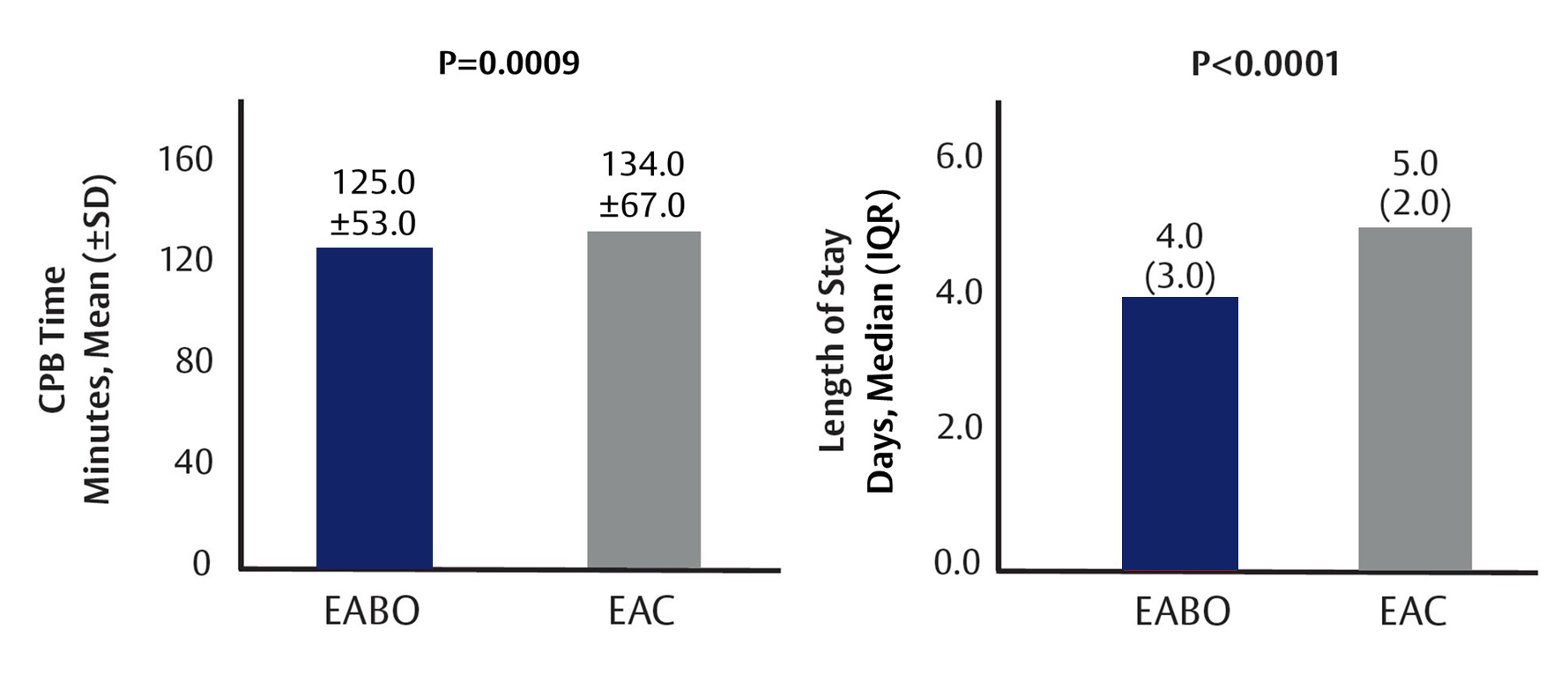
Figure 1: EABO was associated with significantly shorter CPB time and postoperative LOS compared to EAC
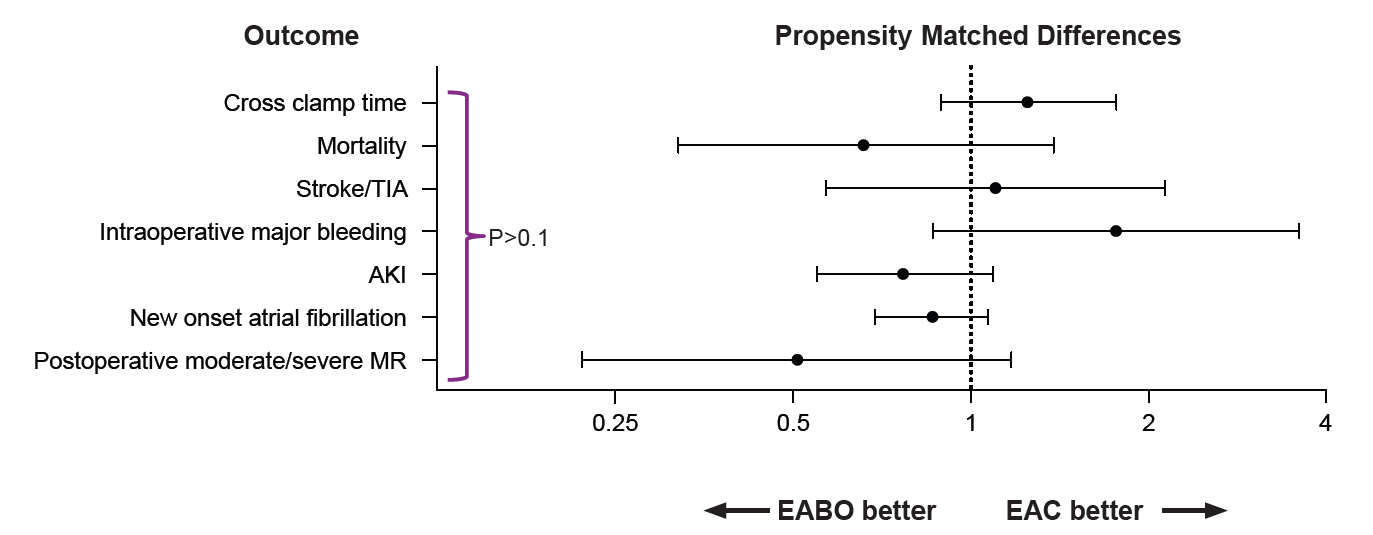
Table 1: EABO and EAC were associated with similar safety and effectiveness
Explore clinical evidence comparing intra-aortic balloon occlusion and external aortic clamping methods.
Real-world evidence comparing hospitalization cost and clinical outcomes evaluation between the endo-aortic balloon and external aortic clamp in cardiac surgery2
 Objective
Objective
The objective of this study was to validate the results of the STS Database study and evaluate costs associated with external aortic clamping (EAC) versus endo-aortic balloon occlusion (EABO) using the Premier Healthcare Database.
 Results
Results
There was no statistically significant difference in total hospitalization costs between EABO versus EAC patient stays. Length of stay was significantly shorter for the EABO group (median (IQR): 6 (5-8) days vs. 7 (5-10) days, P < 0.0001). Rates of myocardial infarction and postcardiotomy syndrome were significantly lower in patients with EABO versus EAC, with no significant differences in any other clinical outcomes.
 Methods
Methods
A 3:1 propensity score- and exact-matched cohort of 1,663 EABO-eligible cardiac surgery cases (10/2015 to 03/2020) was extracted from the Premier database. The researchers examined cost outcomes and clinical outcomes using multivariable generalized linear models to detect differences between groups.
 Conclusion
Conclusion
This real-world evidence suggests that EABO has similar costs and clinical outcomes as the EAC.
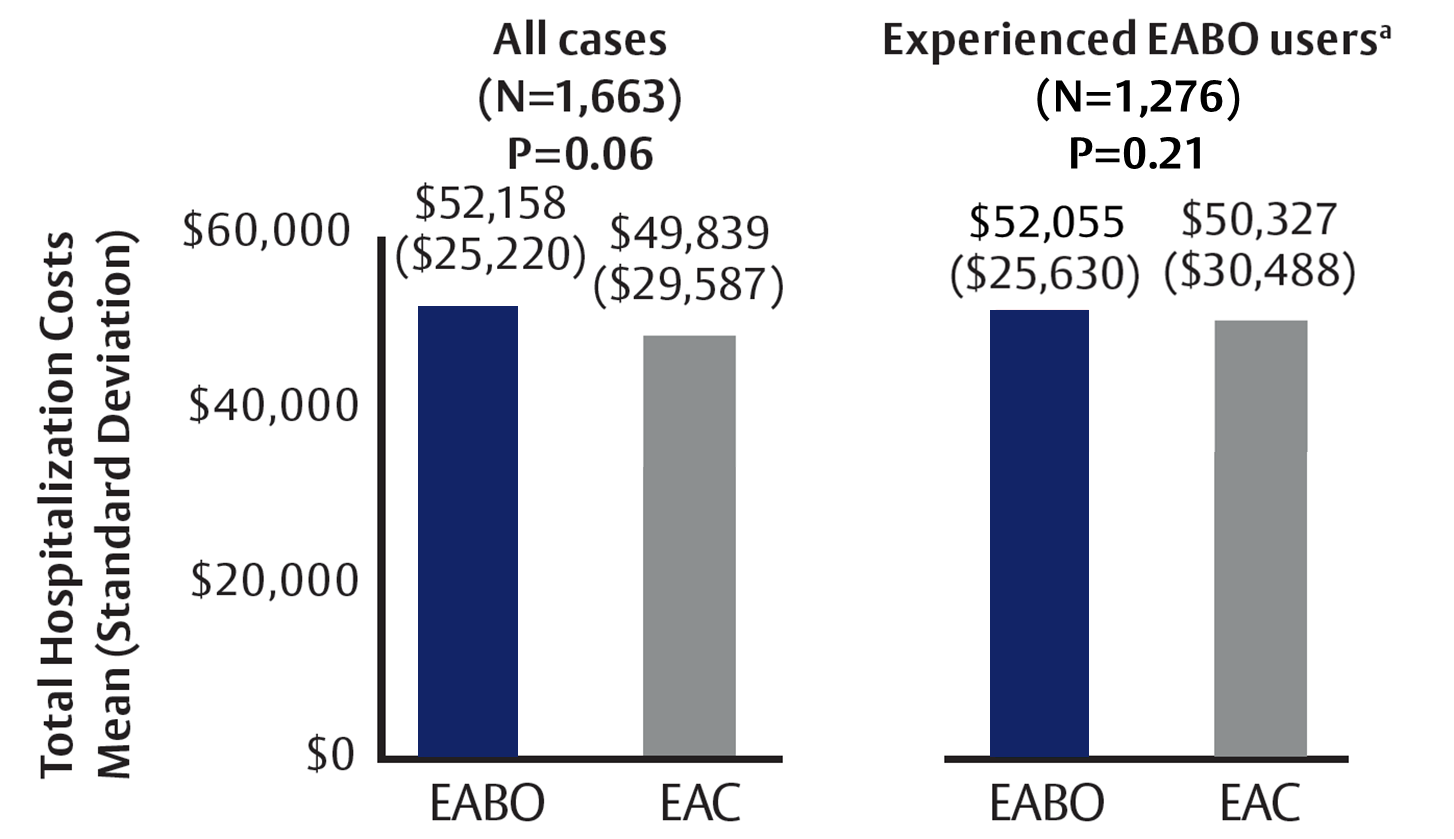
Figure 2: The differince in total hospitalization costs between EABO and EAC
a Experienced physicians were those who had conducted 10 or more EABO procedures in the study period

Table 2: Comparison of the Premier database to the STS database analysis
References
1. Balkhy HH, Grossi EA, Kiaii B, et. al A Retrospective Evaluation of Endo-Aortic Balloon Occlusion Compared to External Clamping in Minimally Invasive Mitral Valve Surgery. Semin Thorac Cardiovasc Surg. 2024;36(1):27-36.
2. Balkhy HH, Grossi EA, Kiaii B, et. al Cost and Clinical Outcomes Evaluation Between the Endoaortic Balloon and External Aortic Clamp in Cardiac Surgery. Innovations (Phila). 2023;18(4):338-345.

